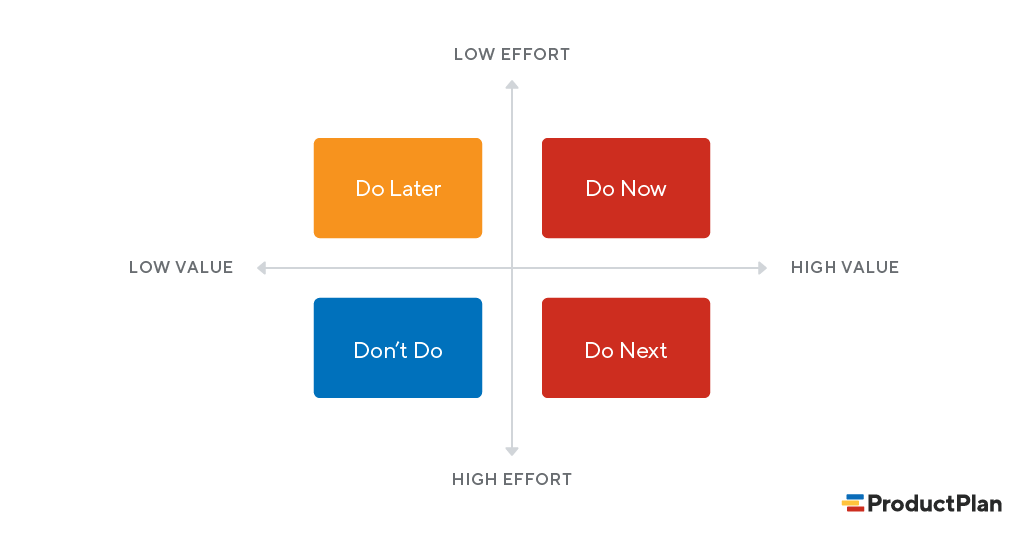
Try using the priority matrix beside your chosen time planning system. For some people, a diary/calendar system works, while others like that reward of marking tasks off their to-do list. How you run your day is up to the individual, although it is recommended you have a planning tool that provides a structure. Now split them up between those that need to be done now or at a scheduled time and those that need to be planned into your day but have flexibility as to when. In other words, if after process mapping we identify 42 inputs to a process, the practitioner is not likely in position to start investigating each input. The most traditional way to use it is to help us narrow a long list of suspected X’s (inputs) down to a more manageable one.
#Lean priority matrix free#
That decision alone has started to free up some time for the first two points. The C&E Matrix can be used for many purposes. Review the tasks in front of you now, if they fall into points 3 or 4 – get rid of them – delegate them, postpone or ignore them. Trivial work – busy work, pushing papers, procrastination.Internet surfing, socialising on-line, texting friends’ personal phone calls A PICK chart is a Lean Six Sigma tool used to categorize and prioritize improvement.We can use them to escape the daily grind. The Action Priority Matrix helps you maximize your effectiveness by categorizing tasks according to how long they take and the impact of completing them. They are often tasks we should not be doing at all. They are oftenĪvoidable by delegation to others, or by ignoring them completely.Īctivities we let creep into our day. Working on specific projects or goal tasksĪctivities that consume time, without the corresponding value.They are the activities that allow us to reach our goals and objectives. They should be cleared away as soon as possible, as they are often not relevant to the goals that are most important to us. As you pick up your next task, mentally put it into one of the four boxes:Ī description of each point with examples follows: 1| Urgent & Important As a business owner or exec, you’ll regularly be confronted with a seemingly overwhelming number of tasks.īy implementing the priority matrix, you can radically change the flow of your workday and effectively use your time. You'll find that items will shift around the quadrants, giving you a better baseline for future prioritization.Working effectively is important, particularly when there aren’t enough hours in the day, and the only option seems to be to stay late, yet again.
#Lean priority matrix update#
Revisit the priority matrix after some time and update your 'done' items to reflect how easy they were to implement and how valuable they turned out to be. You can refine as you place more features on the matrix.

This is not a scientific effort intended to be 100% accurate, but a measure intended to help visualise and decide. Place these on the matrix and compare each feature against those.

The absolute placement is less relevant rather, the relation of the projects to each other is of importance. We suggest looking back at your implemented features and finding an representative for each level of effort. To create such a matrix, a knowledgeable group should get together (a representative of the workers, leadership, engineering, logistics, etc., as needed) and quickly evaluate each project based on their gut feelings on both axes. This will be different to every team (and we encourage you to develop your own) but examples could be your OKRs, the pirate ' AAARRR' metrics, or your product goals.Įqually, effort can be difficult to quantify. The value ranking of a feature is not a decision made on the spot, but is measured against a combination of factors that should be decided before using the prioritisation matrix. Create an action plan for your major strategic items, quick wins, small 'filler' activities and items to deprioritise.Review the items in each quadrant, compare them to each other, and make any changes needed.



 0 kommentar(er)
0 kommentar(er)
